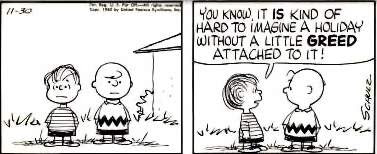Cleveland Trust Company 1905-8, previously First Methodist Church was on the site
To-day, the bank was open, it closed in 1996. The second of five Wednesday concerts took place. Cuyahoga County now owns the properties, including the brutal 1971 tower looming over the temple, and is showcasing for sale. The county paid $45 million, and is asking $17 million.
The huge bank across the street was sold for $18.5 million, two years ago. When it opened in 1924 as Union Trust, it had the largest bank lobby in the world, and the second most office space in the country. It failed in 1933. It became Union Commerce, and then Huntington. The three story columned lobby is now closed. The twenty-one floor building was recently valued at $40 million+.
In the mid-1920s, Cleveland Trust became the 6th largest bank in the United States. At the end of the twenties, came the economic crash. In 1933, the newly inaugurated President Franklin Roosevelt declared a 'bank holiday'. An accounting was held, and it was found that many banks failed. Cleveland Trust was well managed and did not. For over a generation people remembered. They told their children. They told the new residents of Cleveland, those who came from other states, and other countries. These people told their children. They had a strong reputation, until the late 70s (calling themselves 'Ameritrust'), when they called the city's loans in default to spite the young, populist mayor of the city, Dennis Kucinich. In 1991 they merged into Society Bank, which in 1994 merged with Key Bank of Albany.
This temple of commerce was designed by George Browne Post who was the architect of many banks, since the War for the Union, round about New York City. He, and a few others involved in this bank, had work in the Chicago Columbian Exposition. Just before the Cleveland job, he did the Wisconsin state capitol building, and the New York Stock Exchange, that look is here. Much of downtown Cleveland was given over to the Beaux Arts style.
The bank has two pediment sculptures by Karl Bitter (who has outdoor bronzes at the County Courthouse, and did allegorical pediment work at the Wisconsin Capitol). The East Ninth Street side has an eagle and a logo shield. The Euclid side has a mythological allegory on wealth, with bank and building founding dates. The third figure from the left is Hermes/Mercury, who in one of his roles is the god of commerce (he has the winged messenger helmet), and the god of thieves. On the far right, there are chickens.
no one is expected to break the glass ceiling
The bank's lobby is a rotunda some 85' high. It has two mezzanine floors with bronze railings. The top one has thirteen paintings by Francis Davis Millet. What people most remark about in this building is the ceiling. The ocular double glass dome has inner stained glass some 60' in diameter. People only know the name 'Tiffany'. Some book, some record, some relative of a worker, some where, has the name of the maker. High end hotels, and banks about the world around 1900 had such ceilings. This one has 13 spokes, and 13 sections.
Louis Hennepin at Niagara
Now Millet, also painted at the Columbian Exposition (where American mural painting began). He died when the Titanic sank. Here he paints thirteen
scenes of the settling of Eastern North America. The paintings are not
named. People have wrongly assumed they depict the Middle West. In some of the paintings it
looks like 1630s New England, one has a Thanksgiving Pilgrim (Calvinist) preacher. A
French explorer (La Salle?) is in another, a Norse long boat is in another. Several have the breaking of
the land to agriculture. One has an Indian signing away his land. The
only figure easily identifiable is this priest at Niagara Falls. The first
European to describe the falls was Father Louis Hennepin, a Franciscan Récollet, who was there in
1678. He travelled with La Salle.
______________________________
postscriptum 7 December 2012: WKYC 3 announced the sale of the property. On Tuesday the 11th there will be a new, not disclosed, owner.
postscriptum ii: Parts of this building, inside and out, appears in the 2012 film, The Avengers. The inside of the Cuyahoga County Courthouse, Public Square, Soldiers and Sailors Monument, Terminal Tower are seen. Downtown Cleveland substituted for Cleveland and Stuttgart.
postscriptum iii: Karl Brunjes of Cleveland Heights, an ex-emergency medical technician and an aspiring historic preservationist working on a master's degree at Ursuline College, to provide definitive proof that Tiffany had nothing to do with the dome.
Through extensive primary research, Brunjes has proven that the stained glass dome is the work of the Philadelphia stained glass firm started by Italian immigrant Nicola D'Ascenzo, whose other works include stained glass windows at the Folger Shakespeare Library and the National Cathedral in Washington, D.C., and Riverside Church in New York.
Evidence of D'Ascenzo's authorship exists at the New York Historical Society, which keeps the account books of the architect George Browne Post, who designed the Cleveland Trust Building, as well as the New York Stock Exchange.
One of the books lists "Sub-contractors" for the Cleveland Trust job, including D'Ascenzo, who is described as responsible for "leaded glass."
Record books of the D'Ascenzo firm at the Philadelphia Athenaeum, perused by Brunjes, include entries recording the Cleveland Trust job, along with photos of the freshly completed project.























